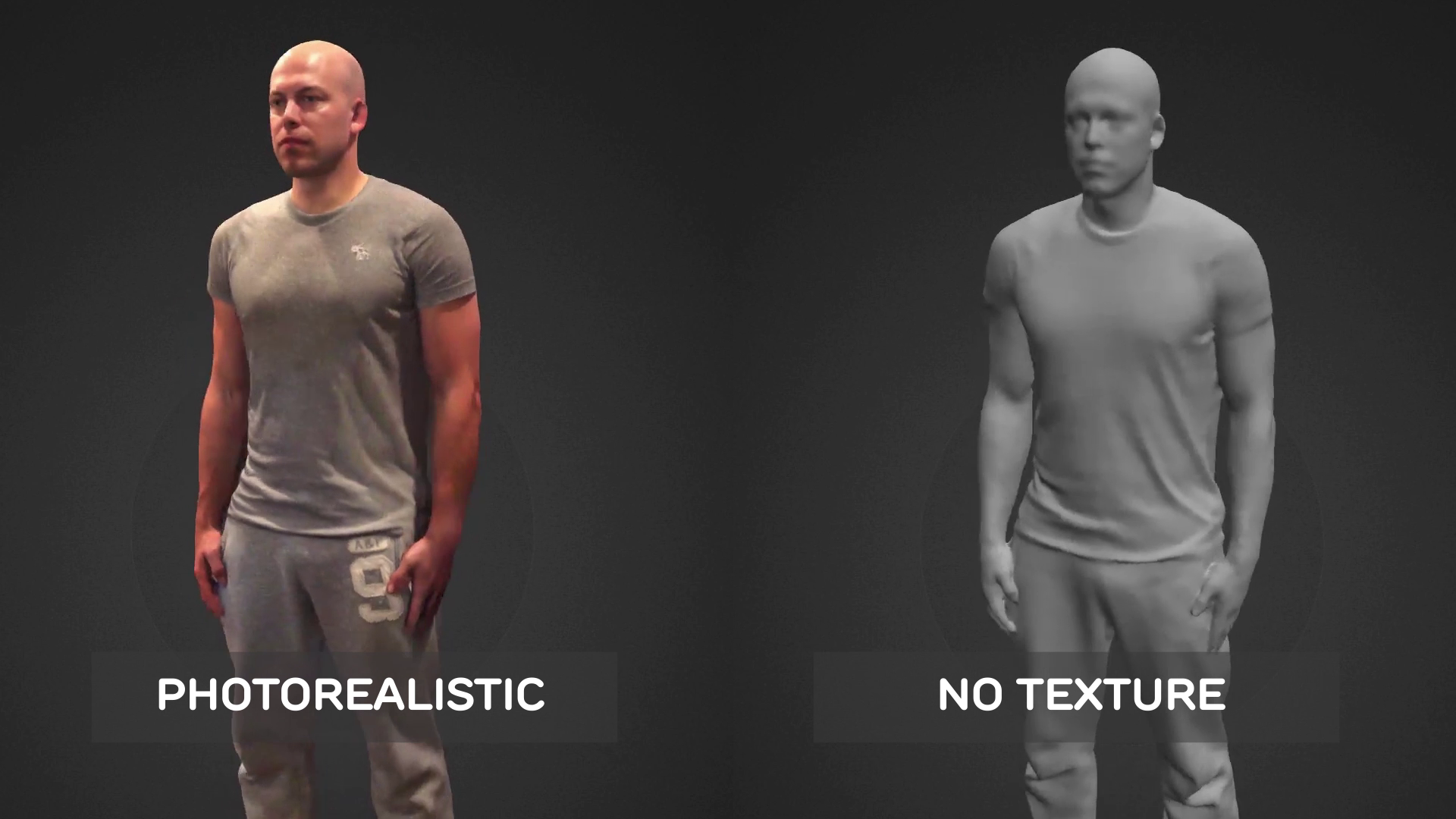How does ShapeScale compare to conventional 3D body scanners and 3D fitness trackers?
We can break down the differences between ShapeScale and other conventional 3D scanners and 3D fitness trackers into 3 basic categories. It's different in its photorealism, accuracy, and portability.
Photorealism
Unlike other conventional 3D scanners, ShapeScale provides a photorealistic 3D scan of your body. While others focus only on the shape of your body, ShapeScale with its photorealistic 3D scan clearly shows your body not just a surface scan.
ShapeScale provides you with a scan that makes the whole experience more personalized, a scan that reflects exactly how other people see you.
Accuracy
Due to the law of physics, the accuracy of the depth sensing depends on the distance of the sensor from the body. Thanks to ShapeScale's robotic arm, the sensor can be maintained closer to the body allowing for greater accuracy.
In contrast to ShapeScale, most of the other full body scanners are rotating the user. Rotating someone creates more micromovements and further reduces accuracy.
Furthermore, the robotic arm allows us to control which part of the body is being scanned, allowing to focus on certain areas of interest and capture them with greater accuracy.
Portability
Lastly, ShapeScale is considered to be more portable than other conventional 3D scanners because of its form factor and battery power.
You can take it with you and scan someone on the go like we scanned Venture Beat editor on a parking lot!
